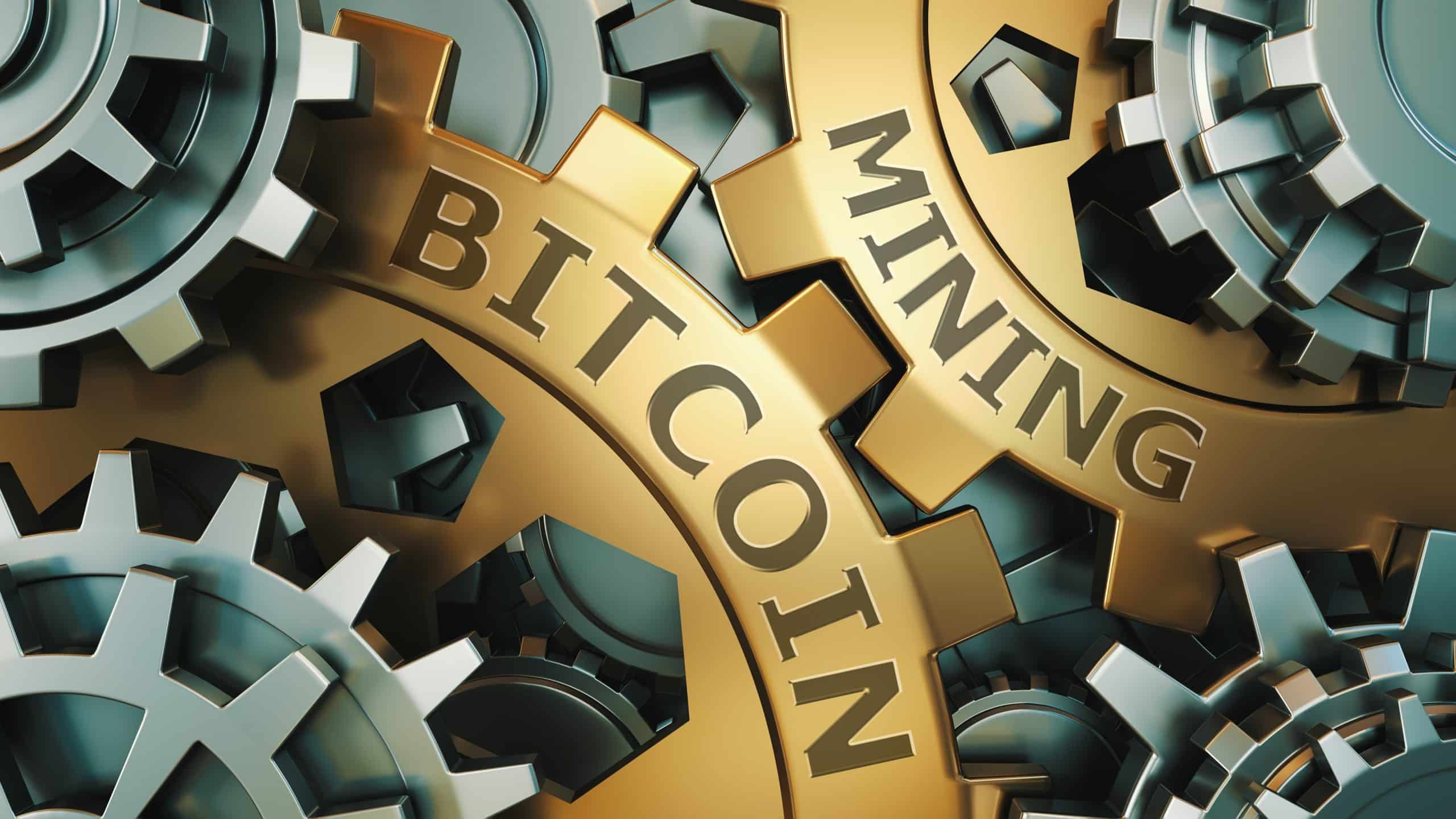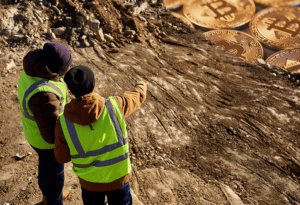When talking about bitcoin mining, there is always the term ‘mining pool’, which could be translated literally as a mining pool.
But what is bitcoin mining? How does it work and what advantages and disadvantages do these mining networks imply for Bitcoin?
If a person decides to become a Bitcoin miner, the first thing they’ll have to do is invest in Bitcoin mining equipment, whose costs can exceed 5000 Euros, no matter how long it takes to mine a bitcoin.
Also, don’t forget that Bitcoin mining is a random process and it’s impossible to know when you’re going to solve a block. What you can predict is that if you want to mine alone, it’s very likely that it will take years to solve a block, in addition to the exorbitant costs of equipment and electricity.
And it is to solve this problem that mining pools are born.
We can define mining pools of bitcoins as decentralized groups organized and managed by third parties to coordinate the hash power of miners around the world and then share any resulting bitcoin in proportion to the hash power contributed by the pool.
Mining pools are a way for individual miners to combine their hash power so they can mine as if they were a single large miner.
Individual miners (in the context of group mining, these are called “hashers”) share in the reward of any block found by the pool, based on their share of contribution given by the hash power.
With pool mining, the miners can earn a relatively constant income, instead of an occasional massive fee.
How does the Bitcoin mining pool work?
There are several variants of mining pools and sometimes new methods are proposed and introduced.
In general, however, a pool is a platform with specialized software in which miners combine the computing power of their equipment for more efficient extraction than a specific crypto.
There are pools that work with Proof-of-Work (PoW), Proof-of-Stake (PoS) or hybrid Proof-of-Work + Proof-of-Stake algorithms.
The mining pool distributes the reward generated by the joint efforts between the nodes in proportion to their contribution. The contribution is called ‘share’. Contributions are ‘failed blocks’, i.e. attempts to find a valid block that the miner has created. The miner is rewarded for all these attempts.
The operator of the Mining Pool only checks the validity of the blocks provided by the participants.
Once one of the participants finds a valid block, the pool compares it with the current difficulty of the entire network and sends it to the common Bitcoin network for verification, where it is validated by other nodes.
After receiving the validation, the consortium will account for the contribution (share) of each participant and will distribute the prize according to their commissions.
So the mining pool pays the miners for their hash rate, based on the expected value of the hash rate. The higher the hash rate of a miner, the lower the target fee and the miner will be equally rewarded for the “harder” work.
Is it more profitable to mine Bitcoin in a pool?
One of the first questions potential cripto miners face is whether it’s more advantageous to mine for yourself or join a “pool.
Well, in both cases, the pros and cons are exactly the same.
If you decide to ‘sail’ alone, the advantage is that you won’t have to share the reward. However, the chances of getting a reward are very slim. On the contrary, while a mining pool has many more possibilities to solve a block and therefore to get the reward, the latter will be shared among all the members of the pool.
Therefore, it would not be correct to say that mining bitcoin in a pool is more profitable than mining alone.
However, if we evaluate the profitability of mining in the long term, mining with a pool would guarantee more stable revenues, as pools pay a constant reward.
In addition, with the mining process there are many technical challenges that also cause losses and in this case the pools have minimized these losses by perfecting the mining process as much as possible.
How do you choose the best Bitcoin mining pools?
The mining pools were created in 2010 and quickly became very popular.
By early 2015, the vast majority of Bitcoin miners were already in the pools.
In June 2014, Ghash.io, one of the most popular groups (operating until 2016), became so large that it contained 50% of the total capacity of the Bitcoin Network.
Fortunately, today the situation of mining pools is very different and the possibility of a pool reaching 51% of the network is no longer the main concern, as it was a few years ago.
If you want to jump into the world of mining pools, but don’t know which pool to choose, here’s what to monitor when choosing a Bitcoin mining pool:
- Equipment: If you’ve already purchased mining devices, you should select a group that meets the requirements of your mining devices’ features; otherwise it’s a good idea to choose the group first and buy the equipment recommended by it later;
- Reputation: before joining a mining pool, we recommend that you research and solicit comments from users who are part of a pool;
- Hashrate: or the speed of calculation of the hardware used, which is also the profit rate of the mining activity. Older pools have more hashrate, which guarantees more frequent block results and therefore higher profits. However, state-of-the-art pools tend to impose high requirements on participants’ equipment;
- Reward system: Today there are only two most widely used reward systems: PPLNS and PPS. The PPS is considered the fairest, but the most stable payments are received from pools that operate with PPLNS;
- Commissions: It is very important to study carefully the conditions of membership in the group. Generally, the lowest commissions are paid by the pools that work with PPLNS, as in this case they are as protected from risks as possible. On these platforms, the commission is generally 0.5-1% or even zero. With PPS, commissions can sometimes be as high as 4-7%, because the pool must pay the miners for all work done.
- Withdrawal: We advise you to also consider how to withdraw the rewards from each pool: wallet, credit cards, electronic money, etc.
Today the most popular pools are Poolin, F2Pool, BTC.com, AntPool, ViaBTC.
Bitcoin mining speed: How long does it take to extract a bitcoin?
There is no specific answer, since, as we’ve just seen, the time for mining depends on factors such as computing power, type of equipment and type of competition.
The reward for the resolution of a block changes over time (which changes on average every 4 years: Bitcoin Halving) , and is currently 12.5 BTC.
In an ideal situation, with the highest computing power and the ideal equipment, it would take about 10 minutes to extract 1 BTC.
But, as we have already said, it is an ideal situation that does not find easy answers in reality.
If we consider today’s rate of difficulty, a lone miner, with the most efficient mining equipment, could take almost five years to extract a single bitcoin.
Is it profitable to mine bitcoins?
The bitcoin miners have existed since its creation in 2009. Today, only the United States has almost 2,625 active miners or nodes, followed by Germany and France with respectively around 2022 and 700 nodes. These three countries have the largest number of individual miners.
As we’ve seen, making a profit from Bitcoin mining can take a long time and, as with other forms of investment, there are always high risks involved if you want to reap high rewards.
So we can say that Bitcoin mining can be a profitable business for those who can afford the best mining equipment or contracts.
However, for small-scale miners, this becomes much more difficult, especially if we think of the halves that halve the block rewards every time and that occur every four years, i.e. every time 210,000 bitcoins are mined.
How to mine bitcoins with my own pc
Bitcoin was the first kryptonet to use the SHA-256 algorithm as part of its Proof Of Work scheme, which requires an incredible amount of CPU effort. The SHA-256 hashing is a powerful process that not all computers are capable of handling.
So if you want to mine bitcoin with your PC, you must use a highly efficient computer hardware system, with high computing power and capable of using the least amount of electrical energy possible.
Application-specific integrated circuits (ASICs), field-programmable gate array (FPGAs) and graphics processing units (GPUs) are the most widely used mining hardware today.
ASICs are generally the mining devices of choice for bitcoin miners.
ASICs are designed to perform faster hash calculations without consuming too much power, as they have 40-60+ TH/s hashrate if they consume 2,000 to less than 3,000 watts.
Among the leading brands in this space are Bitmain, Ebang and Innosilicon.
Many miners also use GPUs, which can often be found in gaming equipment. However, experts say they are more suitable for mining other cryptos such as Ethereum.









